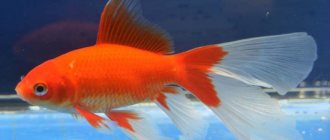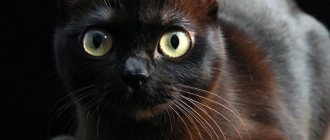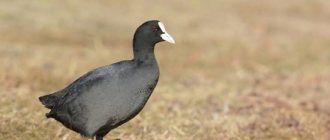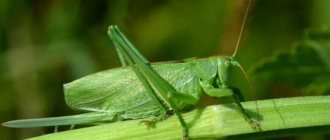Features of behavior
The animal is nocturnal. He deftly and silently crawls through the trees, folding his delicate ears into a tube so as not to injure them.
Galago likes to sleep in absolute silence, so he presses his ears to his head so that nothing will distract him from his rest. Waking up in the late afternoon, the galago raises its ears one at a time, listening for danger nearby. His ears are capable of picking up sounds at a very long distance.
Galago prefers to live alone, but sometimes they live in small groups of no more than 10 individuals. They reproduce 1 or 2 times a year. The cubs that are born (usually two of them are born) live with their mother for up to 3 months.
Galagos feed on small vertebrates, bird eggs, insects and plant foods.
Ostriches
This bird is well known to many inhabitants of the earth. Ostriches are considered the largest of birds. The weight of an adult individual can reach 75 kilograms, and the height can be up to 2.7 meters. Of course, ostriches are usually found a little smaller. But they are distinguished not only by their huge size, but also by their large eyes. For example, if we compare them with the brain of a bird, then its visual organs are still much larger. Therefore, even if the ostrich is not particularly intelligent, it is famous for its keen eyesight. These birds are able to see an object at a distance of a kilometer. As soon as the ostrich sees danger, it runs away. Since other animals do not have such sharp eyesight, they watch the ostriches and also rush to flee from danger, which they do not even imagine yet.
Aye-aye from Madagascar
The Madagascar bat, an animal with large eyes and ears, also belongs to the order of primates and is the only species of the family of bats.
The Madagascar monkey has small sizes (36-44 cm), a long fluffy tail that exceeds the body size by 15-20 cm, and dark brown fur. The head of the aye-aye is quite large, with large hairless ears located on it.
Huge, constantly surprised eyes, large front teeth, huge movable ears and elongated toes earned her the nickname Aye-aye.
The aye-aye is found only on the island of Madagascar, in bamboo thickets or dense forests.
Chameleons
The chameleon can be placed on a special level. Although his eyes may appear small, they are not. These animals have a fairly large eyeball, but it is covered by almost fused eyelids. But the vision capabilities of this creature are surprising. His eyes move independently of each other. This “built-in function” allows the chameleon to observe several objects at the same time. At the same time, he surveys absolutely the entire territory around him; there are no “dead zones” for him. In addition, these lizards are able to see ultraviolet light.
Lifestyle of the Madagascar monkey
Aye-aye is nocturnal, and during the day sleeps in a nest, which it builds from palm leaves on the top of a tree or in a hollow.
Due to the secretive nature of this large-eyed animal, photographs of it are considered rare.
The little hand loves to eat the core of bamboo or sugar cane, it will not refuse fruits and coconuts, and it can eat some types of insects. Aye-aye is a solitary animal. Rarely can live in pairs (female with male during mating season or mother with baby).
Interesting facts about the Madagascar bat
The Madagascar bat is one of the most amazing animals on the planet, here are some facts confirming this:
- The number of these individuals is extremely small, so aye-ayes are included in the Red Book.
- The front teeth of the arm-shaped animal grow throughout its life.
- The animals walk very slowly, since the fingers of the limbs have very long nails.
- The middle finger on the front legs is long and thin, its end is not covered with hair. Aye-aye takes out bugs and insects from the cracks of trees and pushes them down their throats.
- The female brings offspring once every 2-3 years.
- Pregnancy lasts approximately 170 days, babies feed on mother's milk for up to 7-8 months and stay with their mother for up to a year or two.
- The lifespan of the bat is about 30 years (in the zoo).
Alpaca
Photo: Moscow 24/Anton Velikzhanin
Alpaca is the closest relative of camels, llamas, guanacos and vicuñas. They were domesticated more than 6,000 years ago in their native South America. Unlike the ships of the desert, these touching, peace-loving animals do not spit at people. In extreme cases, they spit at each other when they compete for food.
There are two types of alpacas - the common huacaya and the rare suri. The first, thanks to its thick fur, resembles a teddy bear, while the suri's fur hangs in thick curls that curl at the ends. People breed alpacas for their wool - it is stronger and warmer than sheep's wool.
Furry alpacas living in zoos and farms are a real boon for zookeepers. Thick fur gives room for imagination. In the warm season, animals are decorated with fashionable haircuts. The manipulations take about 4 hours. But the effect exceeds all expectations. Some animals resemble long-necked poodles, others look like fancy flower beds on funny legs.
An animal with unusually large eyes
It would seem that the question: “Which animal has big eyes?” — the answer is clear: “The biggest one.” But it’s not that simple: the world’s largest animal, the blue whale, is by no means the champion for the largest eye.
The colossal squid has the largest eyes in the world. The weight of one of his eyes is 3 kg, and the diameter is 30 cm.
However, the Guinness Book of Records records the animal with the largest eyes (in relation to body size). Similar proportions could be achievable if, for example, a person had eyes the size of a large apple!
What is the name of the animal with big eyes that is so famous? His name is Philippine tarsier.
This animal looks like a cartoon character, instilling horror and awe. Its dimensions do not exceed 10 centimeters (without tail), while it weighs only 120-160 g, and its eyes can reach 1.5 cm.
The large round head has pointed ears, the limbs are thin and graceful, and the fur is red-brown.
The animal lives in the Philippine Islands, or more precisely, in some of the southeastern islands of the Philippine archipelago:
- Leite;
- Bohol;
- Mindanao;
- Samara.
Tarsier can live in a variety of places:
- in bamboo thickets;
- on the treetops;
- in abandoned front gardens;
- in gardens and plantations.
He prefers to settle in forests where human access is limited.
Galago species
According to various literary sources, the family includes 11-20 different subspecies of these peculiar animals. Let's get to know the most interesting representatives better.
Galago senegalese
A typical representative of galagos is the Senegalese galago (Galago senegalensis). It lives in dry wooded savannas in Central Africa - from Senegal to Kenya. Body length is 13–25 cm, weight is about 60–200 g. The tail is longer than the body and is densely covered with hair. The fingers have flattened pads at the ends, covered with thickened skin. The color of the coat varies from gray to brown, the belly is somewhat lighter.
The long hind legs allow Senegalese galagos to jump up to five meters.
The diet of Senegalese galagos is very diverse: small animals, fruits, nectar, and acacia gum in the dry season.
Baby Senegalese galagos from Prague Zoo
Graceful galago
The elegant galago (Euoticus elegantulus) is found in central and western Africa. The body length of the animal is 30 cm, the tail is 29 cm, weight is up to 300 grams.
The fur is reddish in color, the underside and sides are ash-gray, the tail is gray with a white tip. The muzzle of the graceful galago is more massive than that of its relatives. The eyes are very large and golden in color. The diet consists of more than 70% acacia gum.
A distinctive feature of graceful galagos is their elongated, needle-like nails, which help them cling to tree bark.
Allen's Galago
Allen's galago (Galago alleni) is found in Central and Western Africa. Inhabits the lower layer of the rain forest.
The animal’s body length is 20 cm, tail length is 25 cm, weight is up to 260 grams. The coat is smoky gray in color and very thick. The underside of the body is light gray.
The diet mainly consists of fruits and small animals.
Galago Demidova
Galago demidoff is distributed in West and Central Africa. Found in tropical rain forests, among vines, in dense foliage, next to clearings.
This is the smallest of all galags: the body length of the animal does not exceed 13 cm, and it weighs no more than 65 grams. Coat color varies from black-gray to red. Juveniles have darker fur. It feeds on small insects, fruits and gums.
Galago Demidova build complex spherical nests from leaves.
Thick-tailed galago
The fat-tailed galago (Otolemur crassicaudatus) inhabits South Africa from Angola to Tanzania. Found in dry and gallery forests.
Body length 30.5 cm, tail – 42 cm, weight up to 1200 grams. Fur color is gray. This is the largest species. Unlike their relatives, thick-tailed galagos do not jump as well.
In addition to fruits, gums and insects, the diet includes birds, eggs, small reptiles and mammals.
Light-colored spiny galago
The light-colored quilled galago (Euoticus pallidus) is found in western Cameroon, southeastern Nigeria, and Bioko Island (equatorial Guinea).
Body length is about 20 cm, tail is about 30 cm, weight is about 300 grams. The fur on the back is yellow-gray, the belly is whitish.
Lifestyle
These cute, bug-eyed babies are actually predators. A hungry tarsier sits motionless, waiting for prey. As soon as it sees its potential prey (lizard, insect or frog), it makes one long leap and captures the prey with amazing accuracy with its front paws. And then he proceeds to dinner, gnawing the victim with sharp fangs.
Tarsiers are also not averse to eating fish, crabs or crayfish.
The animals move quickly and silently through the trees, and rarely descend to the ground.
Tarsiers do not live in captivity. They are too freedom-loving and even in the zoo they cannot find a place for themselves, trying to break free, even at the cost of their lives.
Unusual abilities
This amazing animal with big eyes also has a number of extraordinary abilities:
- They are able to turn their heads 180 degrees due to the special structure of their spine.
- The fingertips have suction pads that allow them to stay on tree trunks and branches for a long time.
- The tarsier's eyes are designed in such a way that the animal sees perfectly both at dusk and in bright light.
- During the flight when jumping (and it can have a range of up to two meters), the tarsier can “steer” with its tail, ensuring precision landing.
Lemur loris is a leisurely animal
The slow loris is another animal with large eyes. A loris lemur sitting on a branch looks like a fluffy ball with big eyes. This animal does not have a tail, or rather, it does, but it is very short, only a few centimeters, and under the fur it is completely invisible. The body length of a bug-eyed fluffy can be from 20 to 40 cm, and its weight is no more than 1.5 kg.
Dragonfly
Another creature with large and unusual eyes is the dragonfly. Her organ of vision is more complexly organized than that of any other creatures. The eye of this insect consists of approximately 30,000 facets. Thanks to them, the dragonfly is able to see simultaneously from behind, from the sides and in front of itself. So, she can immediately notice any danger or approaching food. At the same time, the dragonfly distinguishes color and has the ability to see polarized light.
Lifestyle
Slow lorises sleep during the day and prefer to be awake at night. They see perfectly in the dark, so they hunt small rodents, birds and insects at night. They also eat nectar and fruits.
Lories lead a solitary lifestyle, uniting in pairs or groups only for a short time. In the area where one male lives, several females live. A female ready to bear offspring attracts a male with her own urine, which at this time contains special pheromones.
The female bears offspring for about 3 months, after which she gives birth to one baby. The newborn clings to the mother's fur and spends about 14 days in this position.
The male does not take any part in the “raising” of the cub, even though in captivity the slow loris - the father trusts the baby to the mother only during feeding.
An interesting fact is that all animals with large eyes see perfectly in the dark.
Dangerous pet with big eyes
Slow lorises thrive both in the wild and in captivity. However, before you get this charming animal with big, kind eyes, you should ask the seller what kind of species your potential family member is.
There are five species of slow loris, and one of them, the little slow loris, is poisonous. On the baby's elbow there are glands that secrete a substance that becomes toxic when it interacts with saliva.
The little slow loris uses this poison to protect its cubs from dangerous predators. He simply licks the baby's fur, and it becomes poisonous.
Other species of slow lorises do not pose a danger to humans.











